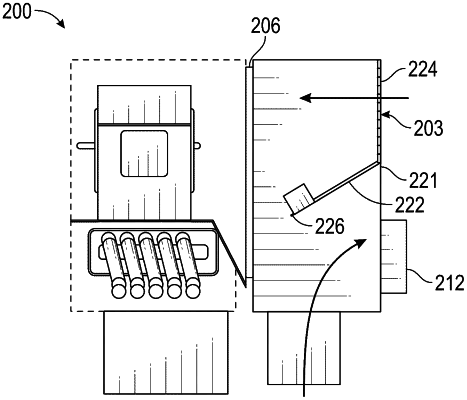| CPC F24F 11/30 (2018.01) [F24F 11/0008 (2013.01); F24F 13/12 (2013.01); F24F 13/105 (2013.01); F24F 2110/10 (2018.01); F24F 2110/20 (2018.01)] | 20 Claims |

|
1. An economizer for a heating, ventilation, and air conditioning (HVAC) system, the economizer comprising:
a housing;
an air inlet extending through a wall of the housing;
a sliding door configured to transition between a closed position and an open position, the sliding door comprising:
a first portion forming a barrier, and a second portion comprising at least one aperture, wherein when the sliding door is in the closed position: (i) the first portion is aligned with the air inlet in a vertical orientation and configured to substantially prevent ambient air from moving through the air inlet, and (ii) the second portion is disposed in a first non-vertical orientation; and
wherein when the sliding door is in the open position (i) the second portion is aligned with the air inlet in the vertical orientation and configured to permit the ambient air to move through the air inlet via the at least one aperture, and (ii) the first portion is disposed in a second non-vertical orientation; and
a controller in communication with a temperature sensor of the HVAC system, the controller being configured to:
receive temperature data from the temperature sensor, the temperature data being indicative of a temperature of ambient air;
in response to determining that the temperature of the ambient air is within a predetermined temperature range, output a first control signal to transition the sliding door to the open position; and
in response to determining that the temperature of the ambient air is not within the predetermined temperature range, output a second control signal to transition the sliding door to the closed position.
|